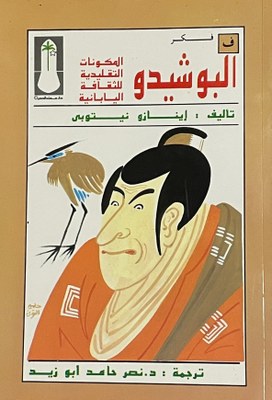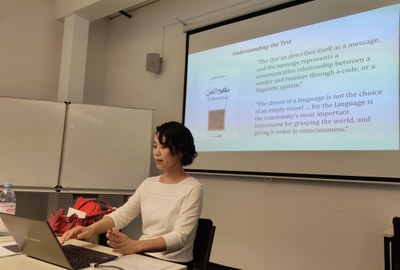Dr. Emi Goto

Public lecture of 28th June 2022. Rethinking religious boundaries through Nasr Hamid Abu Zayd´s writings on Japan
In this lecture, Dr. Emi Goto has introduced an Egyptian scholar of Qur'anic studies, Nasr Hamid Abu Zayd (1943–2010), and his writings on Japan. Between 1985 and 1989, he lived in Japan for four years as a visiting professor of Arabic. Abu Zayd began to rethink Islam and Muslimness as he experienced life in Japan and translated a book by Inazo Nitobe, titled Bushido (the path of samurai) into Arabic. Through an examination of Abu Zayd’s thoughts, Dr. Goto reflected on religious boundaries, including the boundaries between Muslims and others.

Emi Goto is an assistant professor at the Research Institute for Languages and Cultures of Asia and Africa at the Tokyo University of Foreign Studies. Her research areas consist of the intellectual history of Islam, Qur’anic studies, and women and gender. Her English-language works include “Creation of Islamic Norms: How the Veil Became Proper Attire for Muslim Women” in the book Created and Contested: Norms, Traditions, and Values in Contemporary Asian Fashion, and “Inscribing ‘God’s Words’ in Japan: Connecting the Past to the Present through the Translations of the Qur’an” in the forthcoming book Inscribing Knowledge and Power in Muslim Societies.
Dr. Goto´s abstract on "Theology of "Actresses": Feminism, the Hijab and Islam in Egypt
This paper discusses the dynamics of epistemic frameworks on Islam in contemporary societies by taking the example of Egypt, where “actresses”, or female actors, have played a role in its development. It was at the end of the 19th century in Egypt that the population entered the creation of knowledge about Islam, which had long been the role of the ulama, who were educated in religion in traditional ways. In the latter half of the 20th century, with the spread of mass education and the development of mass media, more people, including preachers and writers with modern higher education, lawyers and judges, and female and male celebrities, such as TV presenters, singers and actors, began to speak about Islam in their own ways.
When discussing the role of female actors, studies have focused on how these actors shared and disseminated certain discourses, especially those related to the need for the hijab, covering attire for Muslim women (van Nieuwkerk 2013; Goto 2014). This study will broaden the scope of the research and illustrate the emergence and rivalry of diverse religious discourses. Since the beginning of the 20th century, there have been female actors in Egypt who did not wear hijabs and who questioned the social oppression of women, taking advantage of their widespread popularity and using the latest forms of media. They expressed their understanding of Islamic thought and their views on the social practices associated with Islam. This paper will trace how such knowledge developed and was spread via these actors’ involvement to highlight the plurality and multiple layers of Islamic understanding.
Reference:
Karin van Nieuwkerk (2013) Performing Piety: Singers and Actors in Egypt's Islamic Revival. Austin: University of Texas Press.
Emi Goto (2014). Veils for God: Women and Islam in Contemporary Egypt (In Japanese). Tokyo: Chuokoronshinsha

